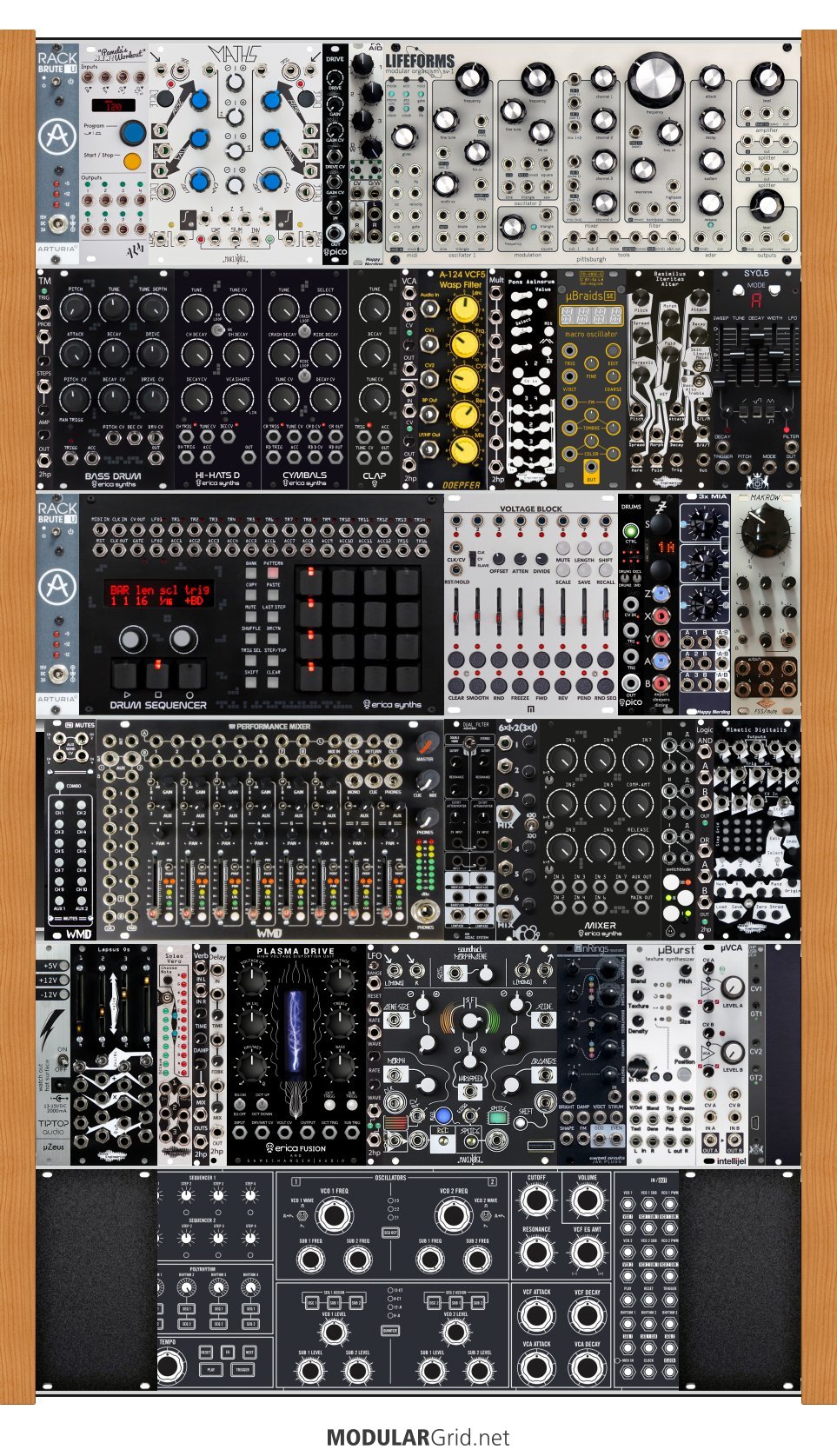+1 on removing all of the drums and going with an external drum machine. Just looking at the cost of the drum-centric modules here in the build, you're at $2090 on just those alone. That there would actually buy you just under SIX RD-9s.
Drum modules also don't tend to require the same degree of modulation sources as other modules, but still take up space that those other modules could use for their mod sources.
What I would strongly suggest is to remove ALL of the drum modules. Instead, add a stereo input preamp to your modular so that you can mix the drum machine with the onboard FX, and this would still keep the basic sound control all going through the modular. Given that you've got a WMD Performance Mixer in there, you're fixed for that level of mixing complexity if desired. While the current state of the art in modular is at an incredible level, the drum modules just haven't kept pace with the vast majority of other modules, so this makes much more sense.
Also, having the MIDI interface dead-center in row #2 is an interesting choice; I can guarantee that the first time you accidentally yank the mini-USB cable, it will be a succinct explanation of why external interfaces shouldn't go into the vast tangle of the patch panel, but stay out on the edges to give easy access to any incoming/outgoing cables from the modular. In short, you probably don't want the MIDI interface there, or for that matter, your main mixer outputs. There's a number of 'flow issues' of that sort here, in fact. Try and find a method of organization that puts specific functions in specific areas; this might seem like it would cause more confusion, but if you hear a tuning error, you immediately know to check the VCOs and you can go right to them with ease, and so on. Trying to build a "voice per row" in this sort of build really just leads to four underfeatured voices.
But yeah, lots to pull out here. I'd even go as far as saying that the Pitt SV-1 should go back in its own case, if you bought it with one. And if you haven't, try rebuilding what it does with "normal" modules...you're likely to find that you can squash the SV-1's functionality into a smaller space than it covers itself. And THAT is the key to Eurorack: maximizing function in a tight space while maintaining user ergonomics.



